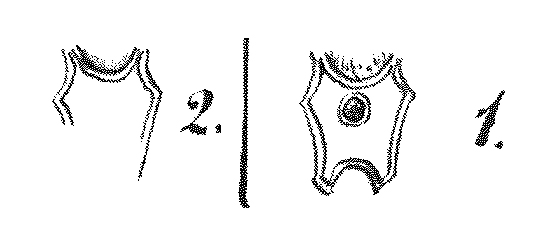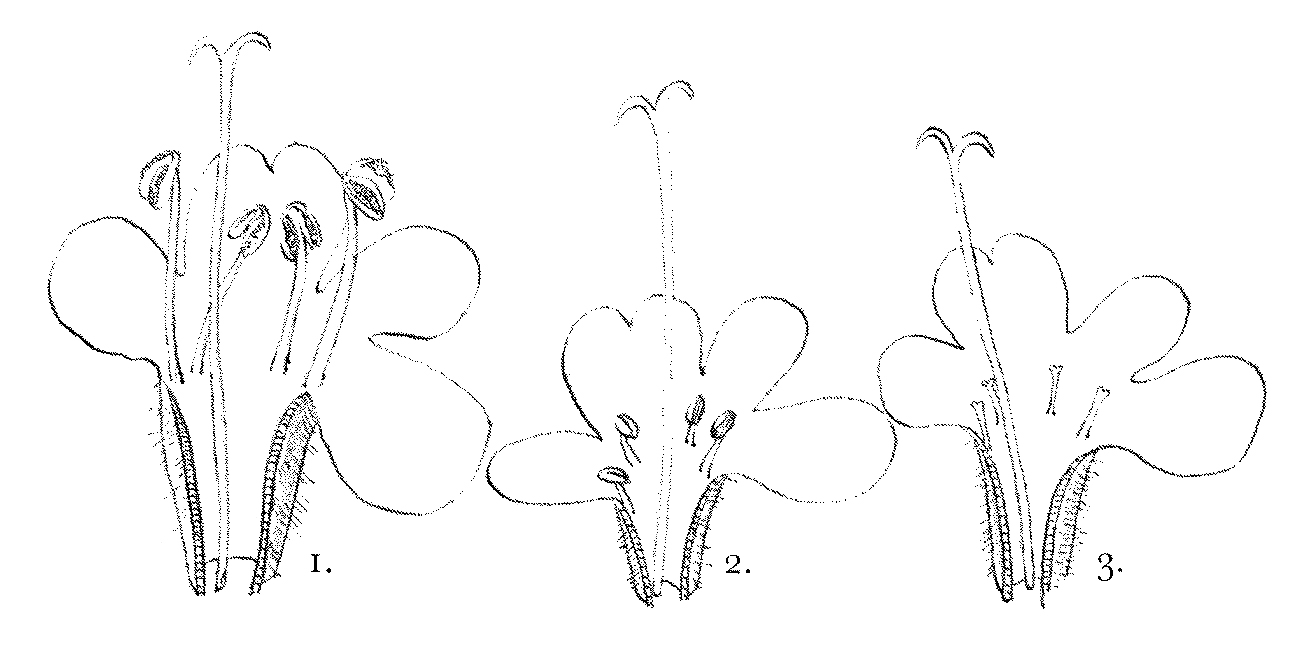From John Traherne Moggridge 6 March [1867]1
March. 6
St. Roch | Mentone
Dear Mr. Darwin
though I have lost several of my Ophrys plants which were marked & drawn last year, I have already watched five of them through all their stages: thus far the inference is that colour, markings & shape of lip, & pubescence—, which form the principal characters of difference, vary but little from year to year—2
One plant brought up a monstrous flower in which the petals & sepals were strangely combined; but even here the colour & markings remained almost unchanged.—
In number 19. there was a curious inversion of the position of last year’s markings.
Last year all the six lower flowers of the spike from this root, had a marking as at fig. 1. ⟨ ⟩ at fig. 2.;

⟨ ⟩ ones of Fig. 1.3
I am working now at the varieties of Viola odorata which are very numerous, & appear to be in several stages of advancement & fixity.4
I have also commenced a set of observations on Thymus vulgaris & I find that it differs from our Thymus serpyllum in presenting on separate plants several forms, in which the stamens are found in different stages of suppression.5
Thus the perfect hermaphrodite form is as represented at Fig. 1.; the next stage which I have as yet observed is as at Fig. 2 where the anthers though useless are still prominent & of a special texture; the third degree is that in which the plant has the anther-cells reduced to two minute, transparent lobes terminating the filament & similar to it in texture, as at Fig. 3.—6 — The style always remains perfect ⟨ ⟩
I find that Rhamnus Alaternus is functionally diœcious though the organs are always complete in number, & not very markedly reduced in form.—7
The other day I heard a curious bit of information from the late Lord Brownlow’s gardner8 to the effect that when gardners wish to obtain seedling dwarf geraniums they always take the necessary pollen from the pair of shorter stamens of a Geranium (Pelargonium) flower; the offspring of this union being smaller than those bred from the longer stamens.—9
If there is no error here the statement may be suggestive.—
We fully purpose to return to Mentone next autumn & intend to leave our present quarters on our homeward route early in May next.—10
You know how gladly either commissions or hints for work will be recieved by yrs. very sincerely | J. Traherne Moggridge—.

Thymus vulgaris flowers cut open & greatly magnified11
CD annotations
Diag. 3:
[diagonal cross with dots between the arms here] added pencil
CD note:
Footnotes
Bibliography
Burke’s peerage: A genealogical and heraldic dictionary of the peerage and baronetage of the United Kingdom. Burke’s peerage and baronetage. 1st– edition. London: Henry Colburn [and others]. 1826–.
Correspondence: The correspondence of Charles Darwin. Edited by Frederick Burkhardt et al. 29 vols to date. Cambridge: Cambridge University Press. 1985–.
Desmond, Ray. 1994. Dictionary of British and Irish botanists and horticulturists including plant collectors, flower painters and garden designers. New edition, revised with the assistance of Christine Ellwood. London: Taylor & Francis and the Natural History Museum. Bristol, Pa.: Taylor & Francis.
Forms of flowers: The different forms of flowers on plants of the same species. By Charles Darwin. London: John Murray. 1877.
Summary
Observations on Ophrys plants and Thymus vulgaris. Encloses sketch of different forms of T. vulgaris [see Forms of flowers, p. 302].
Letter details
- Letter no.
- DCP-LETT-5433
- From
- John Traherne Moggridge
- To
- Charles Robert Darwin
- Sent from
- Mentone
- Source of text
- DAR 109: A90–1, DAR 111: B47
- Physical description
- ALS 3pp inc ††, sketch †
Please cite as
Darwin Correspondence Project, “Letter no. 5433,” accessed on 20 April 2024, https://www.darwinproject.ac.uk/letter/?docId=letters/DCP-LETT-5433.xml
Also published in The Correspondence of Charles Darwin, vol. 15


